Smoothies: The Quest for the Best
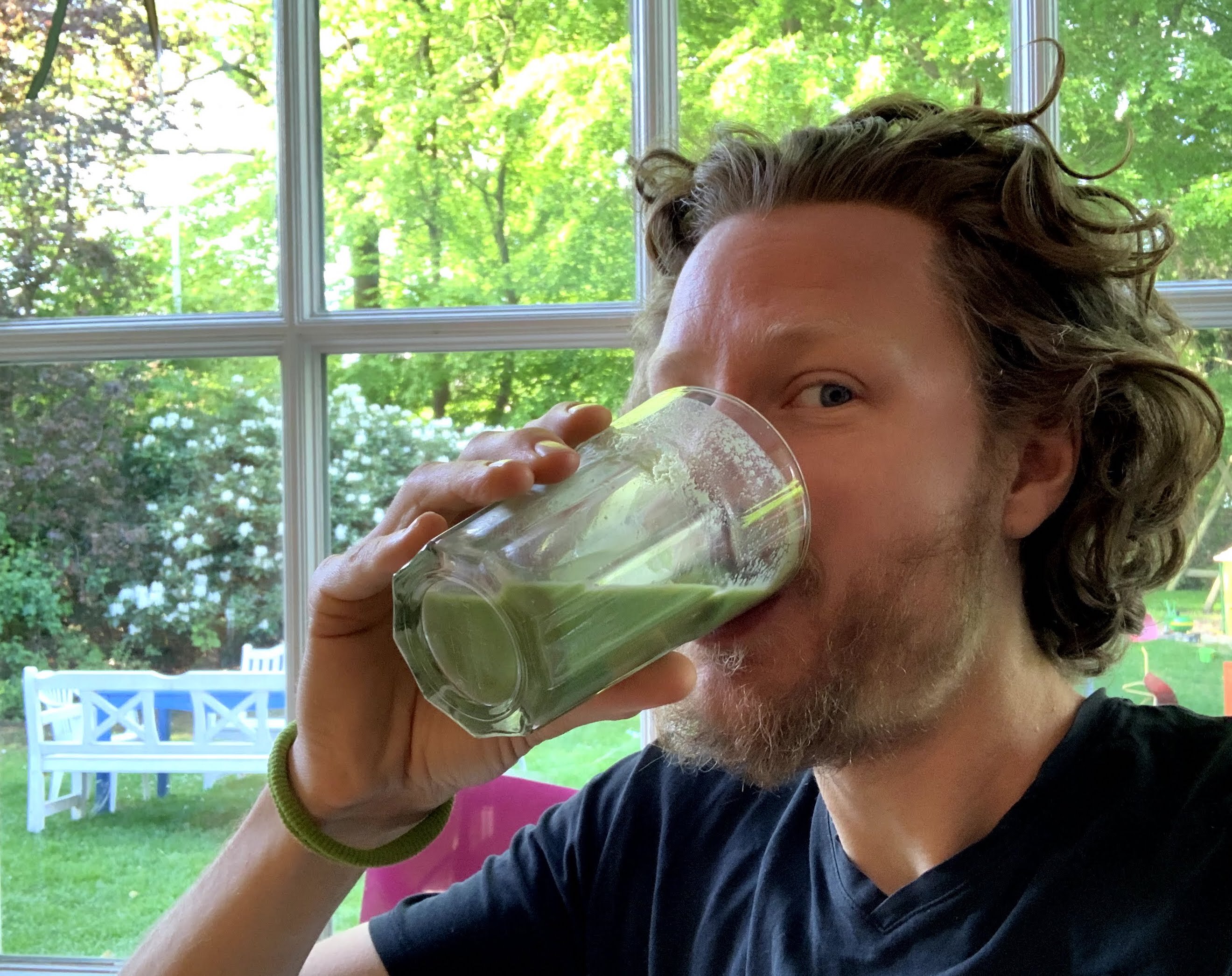
From the time I was a little school boy and up until just a few years ago, I had a weird morning habit. Drinking one liter of cold 3.5 percent milk, enriched with a significant amount of Caotina cocoa powder. Every morning, this got me going. People laughed at me, I didn’t care. Never change a running system, right?
No, actually not right.
It makes sense to sometimes question habits and rethink or reorganize aspects of life. So, some time in 2016, a few months into my vegetarian experiment, I developed stronger active thoughts about this chocolate milk routine. Does it make sense? Is there a better way?
Switching to smoothies seemed to make the most sense. When they became popular I was intrigued. Putting plants into my body instead of a cow’s breast milk sounds like a good idea. But it’s not that simple.
It took a good amount of recipe trial runs until I found a way that worked for me. Then, after a few months, I got bored and changed things about the recipe again. Then, friends told me about their recipes and I tried them. Over the last four years, I have tried quite a few smoothie recipes, but now I feel like I have settled for one which I think is the winner for a bunch of reasons. That’s the recipe I would like to present in this post.
Thinking about what I want out of a breakfast smoothie, I came up with four categories, in which the drink must perform well. Simplicity, low cost, it must be easy to prepare, and, of course, should be delicious and healthy.
1. Simplicity
I’m a night owl. In the mornings I run at a low percentage of my brain power for at least an hour after waking. Simplicity is therefore key, or I just would stop doing this altogether.
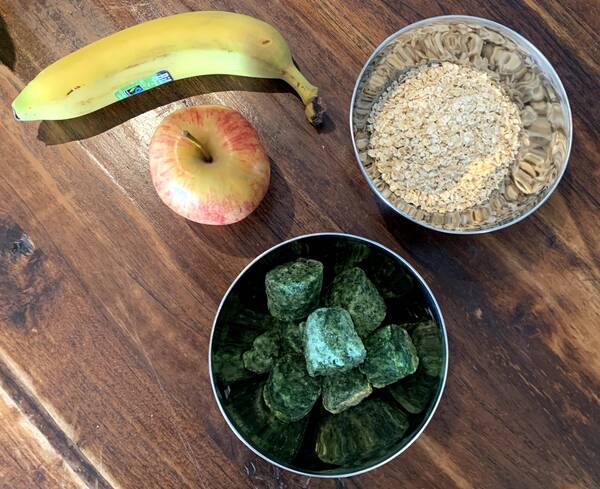
I started with a lot more things. Chia seeds, peeled ginger, lemon juice, honey, peanut butter, even Espresso. Most of these things make the preparation time a lot longer while their impact on taste and nutrition has proven to be questionable to me. Keep it simple.
- 1 banana
- 1 apple
- A handful of rolled oats / 3-4 table spoons
- A handful of frozen hacked spinach / size of 6-8 ice cubes
2. Low Cost
This goes without saying. Smoothies are notoriously expensive. Even if bought at a cheap store, you rarely get a decent one below 3 Euros per liter. Optimizing for cost is usually never wrong, but obviously it depends on a few other variables. For example, many people prefer organically farmed fruit and vegetables at higher price. I am one of those. Here’s the approximated cost of one smoothie at the time of writing in Hamburg, Germany.
- Organic banana: 0.40 €
- Organic regional apple: 0.70 €
- 50 grams of rolled oats: 0.05 €
- 100 grams of frozen spinach: 0.09 €
- 500 milliliters of tap water: <0.01 €
This amounts to about 1.25 € per smoothie. As mentioned, it could be lowered by going for cheaper fruit instead.
3. Easy to Prepare
You could just throw all the ingredients into the blender, add water and hit the button. But I do one thing, and that is preparation of the apple: I wash and cut it so I can remove stem and core. Takes a few seconds.
With this amount of ingredients I top it off with about 500 ml of cold tap water so the combined volume reaches roughly one liter.
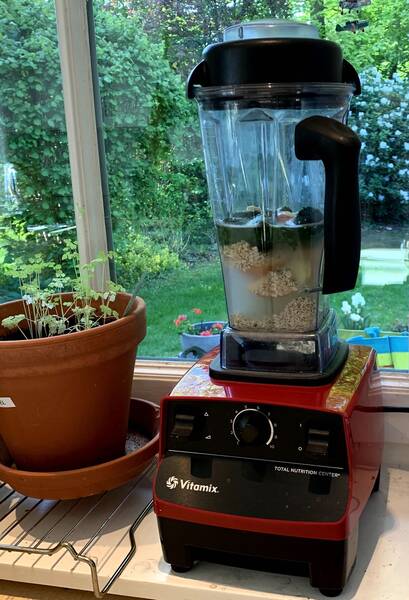
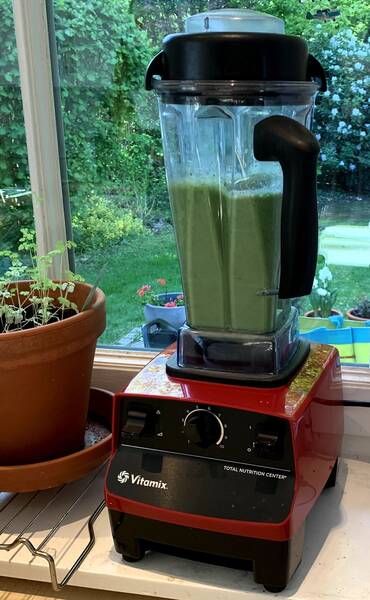
Cleaning up is also an important part, it has to be easy, too. I’ve got a slightly dirty kitchen knife and the blender to clean by hand afterwards. Both just need a water rinse of a minute. The blender needs some special attention once a week, when I get in there and clean it out thoroughly with soap. That’s necessary but only takes just five minutes max.
4. Delicious & Healthy
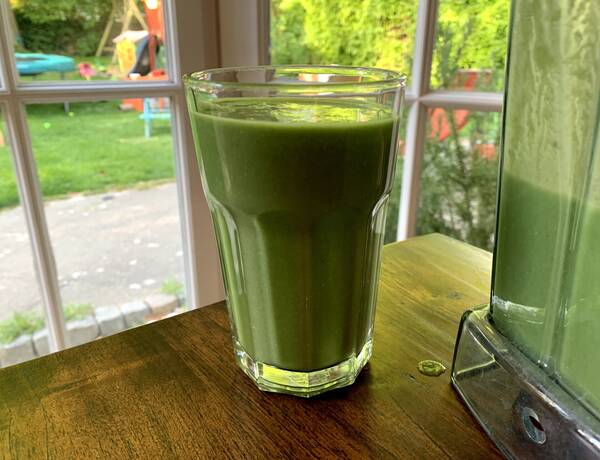
It’s sweet, just thick enough while easily drinkable, and packed with valuable stuff like magnesium, potassium, iron, protein, and a lot of vitamins. Check!
Side note: The blender.
Of course, you’ll need a blender to make a good smoothie. I have been making these nearly daily for a few years now and went through a handful of blenders. Every time a blender broke down, I bought the next level one at a slightly higher cost. Still, they kept breaking. Usually it’s the engine that just smokes one day and falls apart, probably because of the frozen spinach I put in there to get a cold drink instantly.
If you’re fine with a warmer smoothie or prep a smoothie in the evening to cool it down in the fridge overnight, you would probably be good with a low cost device. These are starting at 50 Euros and might last a few years if you’re lucky.
I recommend getting one of the better blenders, though. They are more expensive, but they are more versatile and last longer. After some thorough research, I went for a Vitamix one. The model I bought is around 500 Euros at the moment, which is obviously a lot, but if you do the math it works out. Even the 150 Euro model I owned before this one would break down after two years, right after the end of the warranty of course. The Vitamix brand, on the other hand, offers an incredible warranty of 7 years. So, technically I would break even after three years of using this one already.
To be completely fair, you’d have to include the blender’s cost into the smoothie cost as well. Let’s do that, quickly. If the Vitamix would really break down right after the end of the warranty phase of 7 years, and I would have made 200 smoothies per year (a bit pessimistic), this would add 0.35 Euros to each of those 1,400 smoothies, so we’re at a combined cost of 1.60 Euros per smoothie. We’ve got a winner!

How do you feel after reading this?
This helps me assess the quality of my writing and improve it.
Leave a Comment